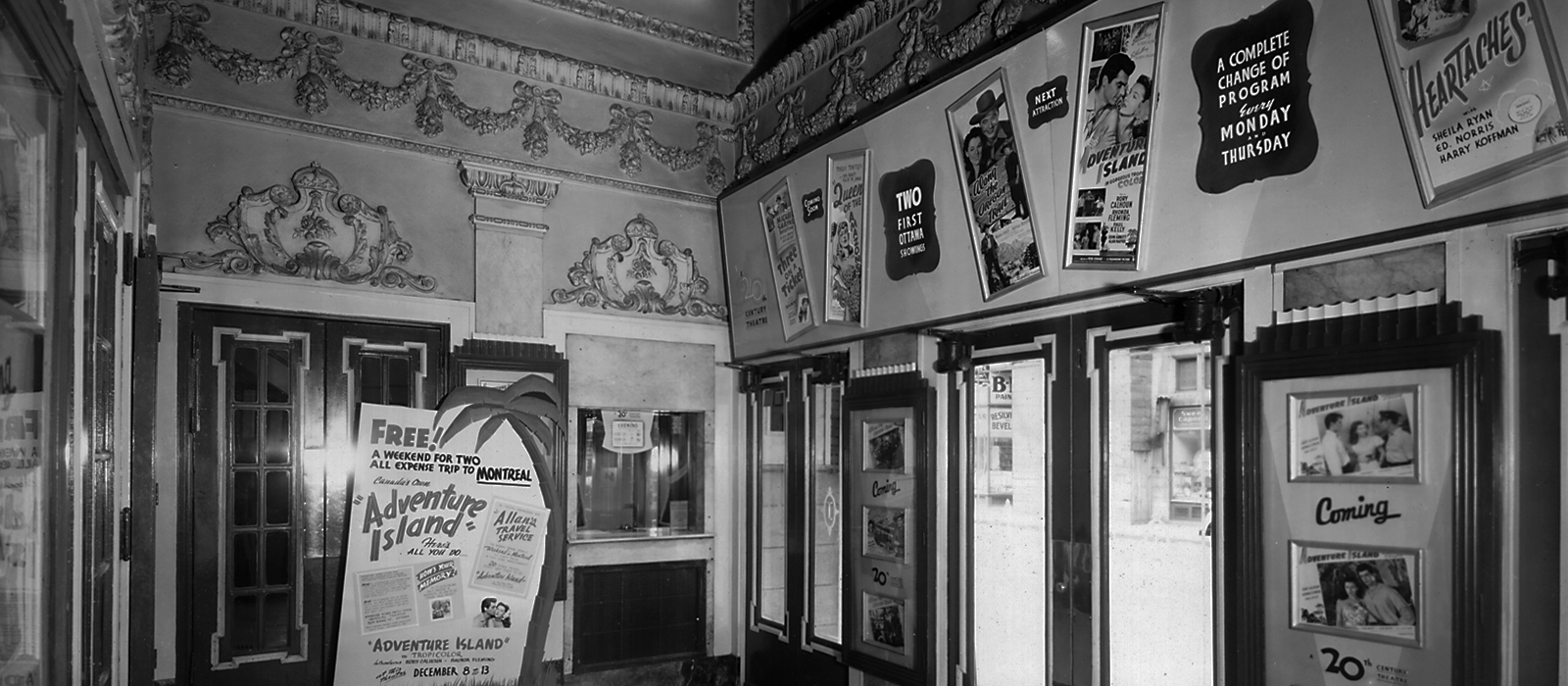Review the slides from Undergraduate Academic Orientation Day, September 6, 2016.
Film Research Collections
The Film Studies program has a substantial research collection that was donated by individuals and institutions, specifically by Prof. Peter Harcourt (Emeritus) and the National Film Archives and the National Film Board Reference Library. It is available for on-site consultation to graduate students and faculty in the Graduate Study Room on the 4th floor of the St. Patrick’s Building. It consists of a wide range of printed materials, such as film journals, periodicals, trade publications and newsletters, reference books, industry indexes, guides to resources and books, in addition to catalogues of the major Canadian film festivals.
Very valuable to this collection are the full runs of Canadian publications like Motion, The Canadian Cinematographer Newsletter, Cinema Canada, Séquences, Cinéma Québec, New Canadian Cinema/Nouveau Cinéma Canadien and the first Take One. Large sets of international publications are also available. They include, among others, Screen, Educational Screen, Sight and Sound, Films Criticism, Films and Filming from Great Britain; Media International and Cinema Papers from Australia; American Radio and Television, Velvet Light Trap and Wide Angle from the United States; Cahiers du Cinéma, Cahiers de la Cinématheque and Film Francais from France.
Carleton’s MacOdrum Library
The University’s main library, the MacOdrum, has over 7,000 books and over 200 hundred periodicals in its collections related to the study of cinema. The collections are strong in holdings of film criticism, theory and aesthetics, national cinemas, film scripts, and in material by and about individual filmmakers. The library has film-specific monographs and journals in English, French, Spanish, German, Italian and Russian. There are excellent inter-library loan services.
Off-campus library holdings and resources
Its Ottawa location provides the Film Studies program with research facilities unequalled anywhere in Canada.
The film archive, library and documentation centre of the National Library and Archives Canada is a major complementary resource. The film archive is a full member of the International Federation of Film Archives and is recognized as a world-class film archive and has ties with other film archives around the world for the purposes of loan, exchange and purchase of materials. It is the deposit archive and library for all films produced in Canada and is responsible for preserving and disseminating Canada’s entire film heritage. In addition, it has extensive public and private documentation relating to the history and production of film in Canada. The Cinémathèque québécoise, with its materials on French and Quebec cinema, is not out of reach in Montreal. At the University of Ottawa, some periodical holdings, and some imprints, especially in French, supplement the MacOdrum Library’s collections.
The collections of the Canada Museum of Science and Technology offer opportunities to research the history and development of image and sound technologies, including film, radio and television broadcasting. The National Gallery of Canada has a collection of films by Canadian artists, many of whom are important figures in avant-garde cinema (Michael Snow, Jack Chambers, Joyce Wieland, et al). The National Gallery and the Canada Council Art Bank also continue to showcase and acquire Canadian and international video art and both have significant libraries on the subject. The extraordinary resources of the Ottawa area are a particular incentive to research and study in the field of Canadian film and video.
A Guide to Writing a Film Studies Research Paper
Film and media events in Ottawa
Ottawa has a lively film and media scene. Annual festivals include the world-class Ottawa International Animation Festival, the Making Scenes Lesbian and Gay Film and Video Festival, the European Union Festival, the Latin American Film Festival and the One World Film Festival. The Canadian Film Institute screens important Canadian and international cinema year round. Film, video and interactive media are regularly on exhibit at the National Gallery of Canada, the Ottawa Art Gallery, and artist-run organisations Galerie 101, Available Light, SAW Gallery, the Independent Filmmakers Cooperative of Ottawa and other ad hoc venues. Ottawa has excellent art-house and repertory cinemas where independent and international films open soon after their theatrical release. Of particular note is the Mayfair Cinema located near Carleton University. Originally opened in 1932, it is one of the oldest, still-operating “atmospheric” movie theaters in Canada with many of the original interior details intact. It offers an eclectic and vibrant program, attracting film buffs of all ages.
Ottawa is also the home of two major independent film and video production community centres, the Independent Filmmakers Cooperative of Ottawa and SAW Video Co-op, which provide funding, equipment and post-production resources.
Local Partners
The following is a list of links to some of our “community” partners.
We are also grateful to some of these organizations for providing us with practica/internship placements.
Ottawa International Animation Festival
Independent Filmmaking Coop of Ottawa (IFCO)
